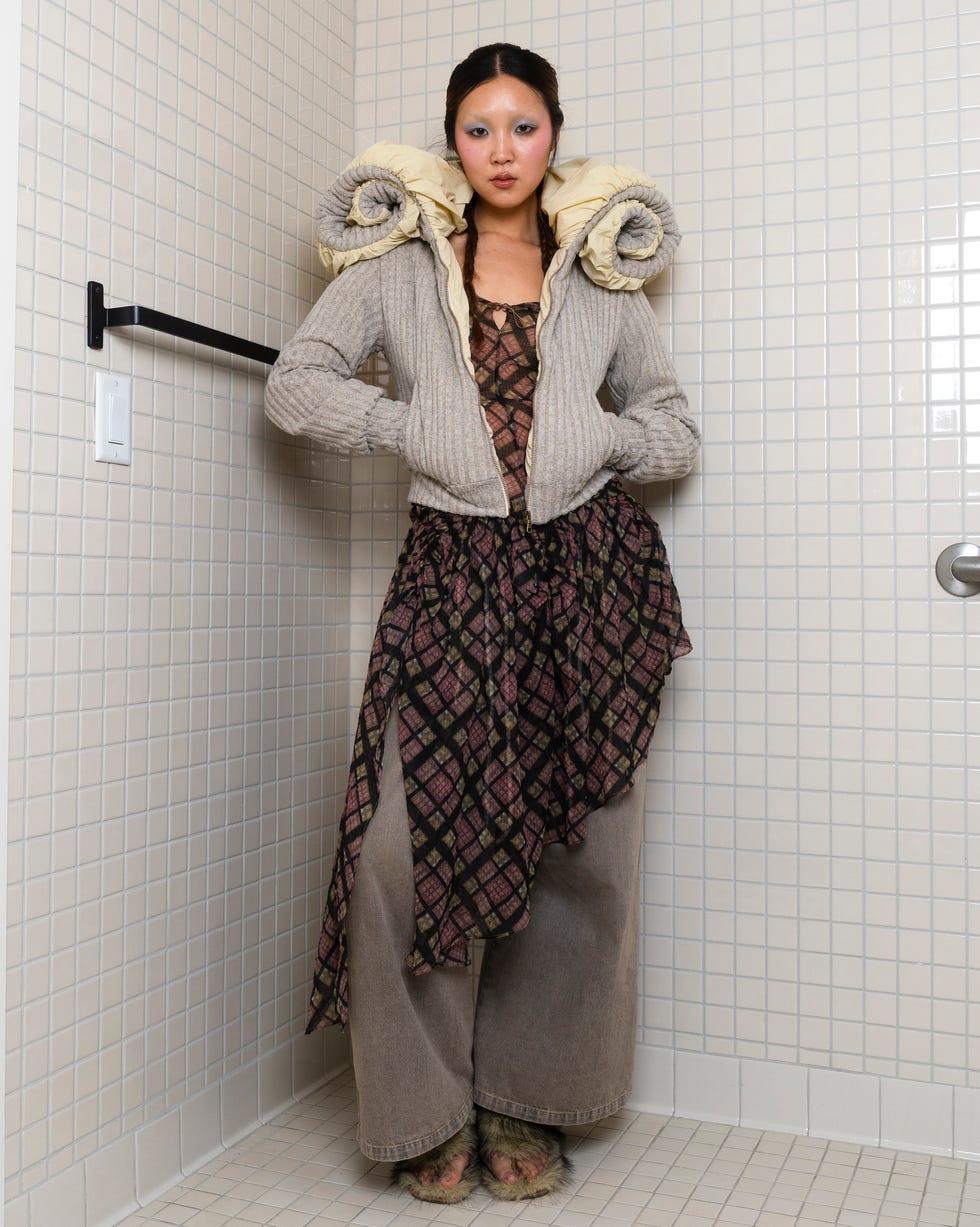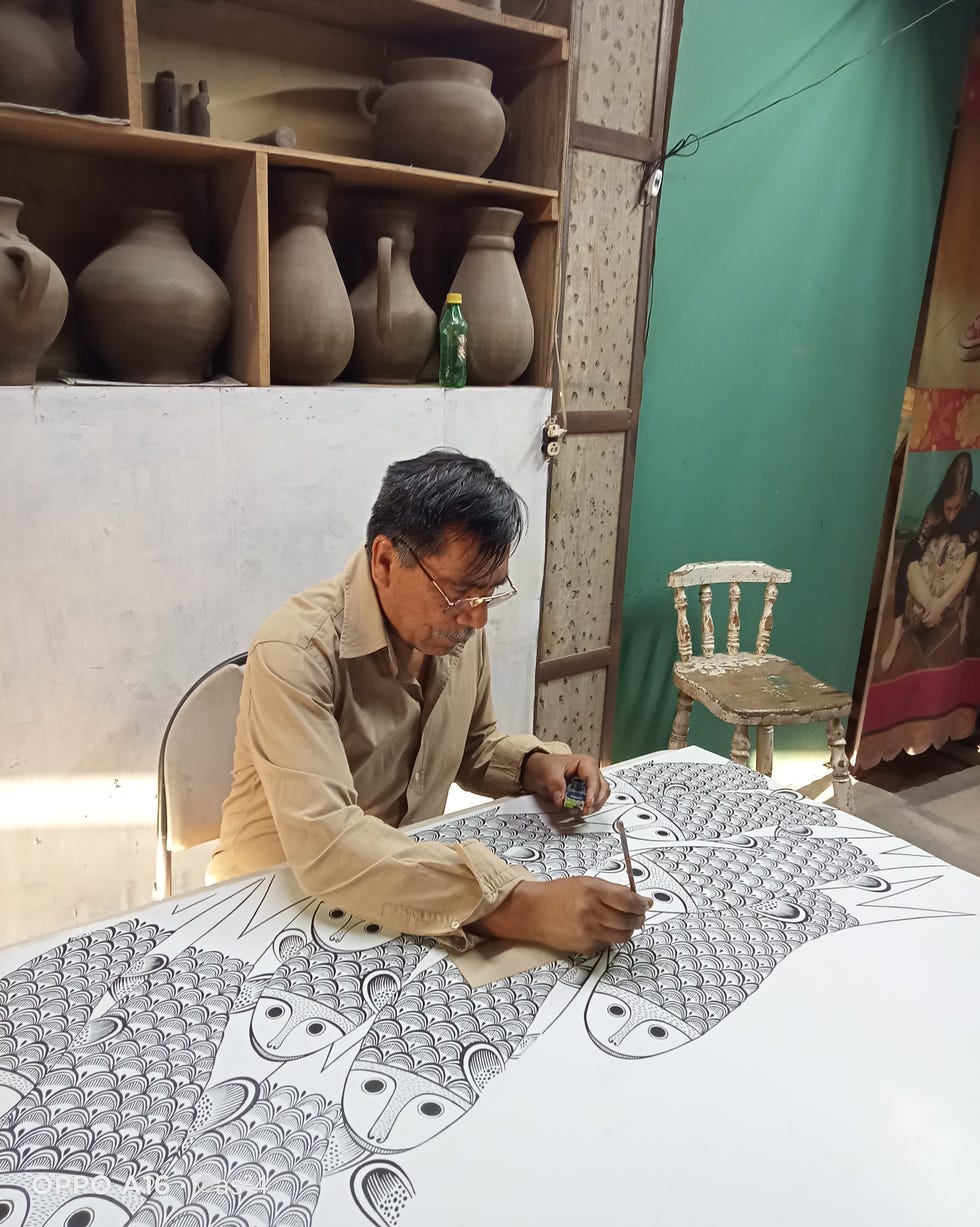How Will the Tariffs Impact Independent Fashion Brands?
“I want to stay true to our values, but the financial pressure is real. It forces small brands like us to make difficult choices—raise prices, reduce quality, or change our approach—all of which go against the kind of brand I want to build,” Yitao Li, a Parsons alum and the founder of China-based independent label Taottao, tells ELLE.com. Since its inception, Taottao has become a downtown cult favorite, staging its showrooms during NYFW for its entirely handmade pieces, but that process is becoming increasingly uncertain as small brands attempt to navigate potentially business-ending fees while importing their products and materials into the U.S.
A global trade war is upon us, and the fashion industry is anything but exempt. From luxury magnates like LVMH to ultra-fast fashion giants like Shein, everything will be affected to various degrees. Various being the key word, as consumers and companies alike are still attempting to wade through the constantly changing legislation. Somewhere in the middle, independent fashion—a notoriously difficult and fickle business to begin with—is at risk of getting lost in the mix.
According to a 2024 report by the American Apparel & Footwear Association, the U.S. receives approximately 97 percent of all clothing and shoes from foreign countries, specifically China and Vietnam. Currently, U.S. tariffs on China stand as high as 145 percent, with little clarity on a path forward. China has also announced retaliatory tariffs up to 125 percent, intending to go toe-to-toe with the U.S. Other major textile-supplying countries such as India are currently facing tariffs of 10 percent, which could jump to 26 percent if an agreement is not reached following Vice President JD Vance’s visit to the country. The U.K. and EU are also subject to a baseline of 10 percent; however, Canada’s tariffs were ultimately postponed—meaning your Ssense shopping cart is safe, for now.
Most importantly, President Donald Trump is set on eliminating the longstanding de minimis rule, which exempts direct-to-consumer purchases under $800, meaning if you purchase an item under $800 directly from a brand, you won't have to personally pay an import tariff. Now, the new policy could kick in as soon as Friday. “Since the U.S. doesn’t yet have an efficient system to collect taxes on small packages—unlike many other countries—we’re facing massive delays in customs clearance,” Li explains. “These delays and unexpected fees directly affect both our timelines and our customers’ experiences. I believe our customers would rather see their money go toward the craftsmanship and people.”

A look from Taottao’s fall 2025 collection presentation.
Over the last few months, apparel companies have gone back and forth questioning whether to raise consumer prices. Shein and Temu both issued statements notifying customers that as of April 25, all prices will increase, some as much as 337 percent according to reports by Bloomberg, and urged them to shop as much as possible in advance. Realistically, the average American shopper will continue to take the path of least resistance—if prices are rising across the board, the least expensive option remains, well, the least expensive option.
But as some upper-middle-market brands attempt to steady the waters in the face of a potential recession, there are still many daunting challenges. Waking up to breaking tariff news every morning isn’t easy either. “It’s like dealing with an alcoholic parent,” Rachelle Hruska, founder and designer of New York-based label Lingua Franca, tells ELLE.com of the uncertainty. The brand largely imports its cut and sew materials from Portugal and Peru and its cashmere—a fabric that has never been produced on a large scale inside the U.S.—from Mongolia and China which is already subject to the 145 percent import fee. From there, all signature customizations take place in its New York studio, but for now, Hruska is holding off on bringing future orders into the U.S. for fear of potentially jeopardizing the small margins that come with running an independent business. Since Lingua France also sells wholesale to companies like Saks and Nordstrom, the current collection was priced and sold months before production and importing began. Hruska explains, “Now, the wholesale price doesn’t cover the [added] cost. It’s not like we can go back to every store and say, ‘We’re just going to double all of our prices that you booked and paid for in February.’”

Artisan Angel Santos designing for Heirlome’s spring 2025 collection.
It won’t be as simple as turning to domestic manufacturers and finding a replacement for fine-crafted goods either. Heirlome, a New York-based independent label founded by Stephanie Suberville and Jeffrey Axford, imports fabrics from across foreign countries including China, India, and Bolivia. The brand also frequently invites artisans from Mexico into the design process. When it comes to cultural skills passed down for generations, such as lace making, embroidery, macramé, and beading, not only can these fabrics not be recreated by a U.S.-based factory at the drop of a hat, but these processes may disappear entirely without preservation and global amplification. Suberville tells ELLE.com, “Our first season, we had a crazy lace dress, and we worked with a lace mill in France. These hand-cut flowers couldn’t have been recreated in New York. To teach someone to do [a generational craft] like that here in the States would take decades. You can’t flip the switch overnight.” Should tariffs continue to eliminate already razor-thin profit margins, Li echoes that the New York fashion scene is at risk of losing its unique diversity and global perspective.
Currently, Heirlome is unwilling to cut ties with years-long factory relationships and is working closely with its manufacturers to navigate the situation. Suberville and Axford hope that since their price point is already a little higher due to their craftsmanship and high-quality materials, with blouses priced around $800, that they won’t lose discerning customers should they choose to adjust. Contessa Mills, a New-York based designer who produces in between China, India, New York, and L.A., is currently holding off on raising prices. However, Mills tells ELLE.com that if she were to pivot from China and India, “It will be frustrating because it is such a hunt to find the quality of button, the quality of zipper, the quality of everything you want. So to have to start that process over will be difficult.”

Kwame Adusei accepting the sustainability award at the Fashion Trust U.S. 2025 Awards.
For L.A.-based designer and winner of this year’s sustainability award from Fashion Trust U.S., Kwame Adusei, the current scramble to decide how to deal with tariffs and a lack of American-made factories isn’t surprising. Born in Ghana, and raised next to a landfill, the designer is hyper-sensitive to the waste produced by all levels of global trade in the fashion industry that have helped exasperate overconsumption and unethical production. “The reason why people have lost so much hope in luxury is because of these companies that have sold this false idea of a one-stop shop to make your clothing. Meanwhile, things are getting pieced together behind the scenes, and ending up in landfills,” he tells ELLE.com. Before opening his own atelier, the designer built his own in-house factory and is now doing the same for his first outpost in Paris. As a result, the designer is an advocate for smaller-scale domestic production wherever possible. His point of view seeks designers to discourage waste, not find new ways to chase maximum profit. However, these processes don’t happen overnight—Adusei has been in the industry building his name and brand ethos for almost 17 years. But he encourages the impact of independent design—“We have to bring clothes that fit well and enhance the human experience to the forefront of fashion,” he says, “rather than buying something that’s just ‘okay.’”
As tariff updates roll in daily, the best that most independent brands can do is to tread cautiously. Should the current rates continue, many labels will likely continue to prioritize direct-to-consumer goods in order to not lose out on faltering wholesale margins. Unwilling to sacrifice quality and long-standing relationships, many designers are continuing to stand up for sustainable, ethical, and conscious production from across the globe, even if that means an increasingly uncertain upcoming production cycle for the next nine to 12 months.
elle






